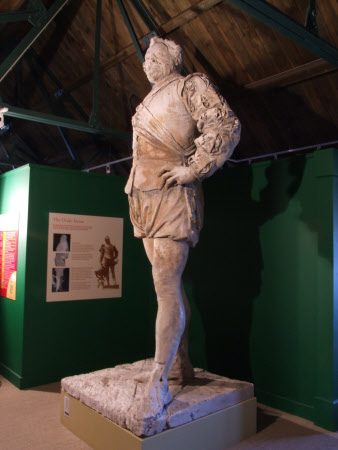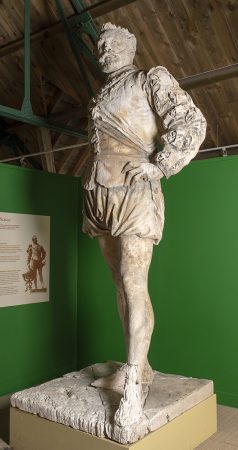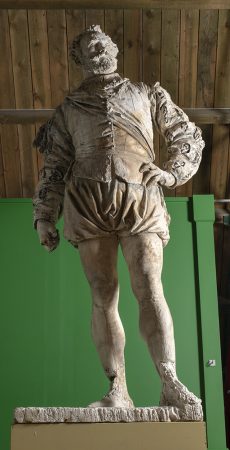I’ve recently been photographing for ArtUK again, this time in South Devon and Bristol. Firstly, after a treacherous drive on snow packed icy roads over Dartmoor to National Trust’s Buckland Abbey. Here my trusty two wheeled cart, over-loaded with studio gear, was no match to the flights of stairs up to the top floor where the sculpture was located.

Sculpture, plaster, Sir Francis Drake by Sir Joseph Edgar Boehm, RA (Vienna 1834 – London 1890).
The biggest challenge here at Buckland Abbey was photographing the huge plaster sculpture of Sir Francis Drake. The sculpture had been discovered in 1999, hidden in undergrowth in the woods on Haldon Hill in Devon by a member of the public. The image top left is from the National Trust website. Towering over 3 metres high and set even higher on a plinth; it was displayed at the top of a steep staircase. I would normally want to position my camera at a height mid-way between the top and bottom of a sculpture, or a little higher than the centre when the top has important features, but this was impossible with Drake without moving him or making a heavily distorted image with an ultrawide lens from close up.

My photo for ArtUK
Lighting and background was also an issue: I would normally use studio flash and reflectors to submerge the sculpture in soft light to reveal its features against a plain grey background. But here the shear scale of Drake (the original plaster model for the bronze statue of Sir Francis Drake at Tavistock) and the limited time I was allotted meant a compromise had to be met. Controlled lighting was achieved by balancing flash with ambient daylight and making a long shutter exposure. Care had to be taken to prevent overexposure due to the slow shutter speed by positioning my backdrop in front of a window and using stiff foam reflectors to disguise bright highlights elsewhere. With no plain background it was important to keep the images as simple as possible by removing any ‘clutter’ visually through my camera angle and position, and, in the example of the front view, by keeping some of the straight lines parallel to the camera frame.

My photo for ArtrUK taken from the bottom of a flight of stairs.
Here are my photos of sculpture at Buckland Abbey on the ArtUK website!